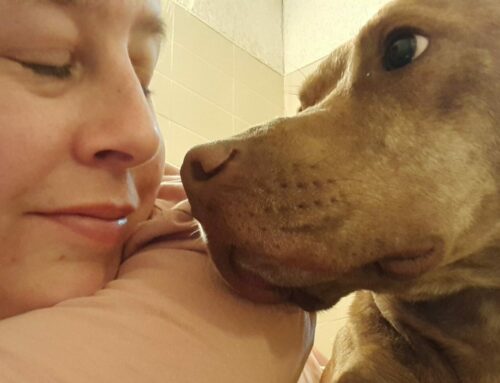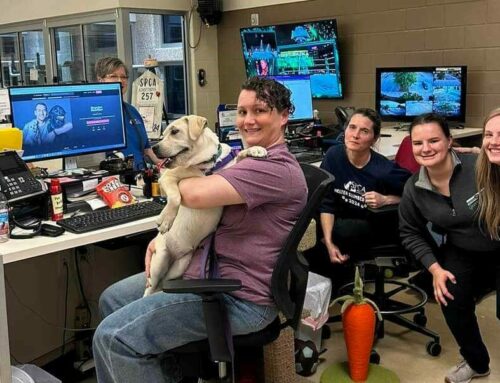By: Sarah A. Neikam, Marketing Director
Losing a pet can be devastating, and when it comes to cats, the search can be especially challenging. Cats are experts at hiding, making their recovery a true test of determination. But with some insight into their behaviors and the right strategies, you can increase your chances of bringing your beloved feline companion home.
The Missing Animal Response Network, or “MAR” is a professional training program that provides practical, time-tested techniques to help you bring your cat home faster. MAR was developed in 2005 by Kat Albrecht, a former police bloodhound handler, crime scene investigator, search-and-rescue manager, and police-officer-turned-investigative pet detective. Since 1997, Kat has solved lost pet investigations by using law enforcement-based techniques and strategies that are normally used to solve lost-person investigations.
Albrecht’s program breaks down three primary types of lost cat behavior: Displaced Indoor-Only Cats, Displaced Outdoor-Access Cats, and Lost Outdoor-Access Cats. By recognizing the different behaviors of these types of cats, you can use the best strategies to locate your missing feline companion.
First, we have displaced indoor-only cats. These curious escape artists find themselves venturing into unfamiliar territory, but they’re often not truly lost. Displaced cats have a knack for hiding in silence, staying close to the point of escape and avoiding any unnecessary meowing. They know instinctively that predators are less likely to find them if they conceal their presence. Look for them under decks, houses, sheds, porches, or in dense shrubs and grass.
To find a displaced cat, MAR recommends using a humane trap. You can rent or borrow one from a local shelter or veterinarian, or purchase one online or at pet stores. If you’re unsure how to use a humane trap, seek guidance from animal rescuers, shelter staff, or your veterinarian. A frightened cat is more likely to respond to tempting food in a trap than to calls or scents, as their top priority is remaining hidden.
Next up are displaced outdoor-access cats. These adventurous felines are accustomed to exploring the great outdoors but may have encountered a traumatic event or been chased away from their familiar territory. Disoriented and scared, they might seek refuge in a neighbor’s yard or other unfamiliar areas.
For displaced outdoor-access cats, a humane trap is also an effective tool for recovery. Additionally, it’s crucial to search the immediate vicinity, as many of these cats will eventually make their way back home. Knock on doors, post eye-catching posters with large text and a photo at major intersections, and utilize the power of social media. Engaging your community can be a game-changer in your search efforts.
Lastly, we have lost outdoor-access cats. These seasoned explorers are well-versed in the ways of the outside world but may have faced an obstacle preventing their return home, such as an injury or entrapment. To find a lost outdoor cat, conduct an aggressive, thorough search of their usual territory, including your yard and neighboring yards. Leave no stone unturned and check every possible hiding spot meticulously. Get down to the cat’s level and see the world from their perspective. A 2017 study revealed that lost cats tend to stay within a 17-house radius from their owner’s home, so focus your search in the immediate area.
While some suggest using litter boxes or scent articles to attract lost cats, MAR and Albrecht discourage this method. The scent can attract territorial cats, potentially leading to aggression or further displacement of the lost cat. Instead, invest ample time and effort into a physical search, enlisting the help of neighbors. In certain situations, digital wildlife cameras can also prove useful.
Losing a beloved cat is undoubtedly a difficult experience, but armed with knowledge about their behaviors and these proven techniques, you can increase the odds of a joyful reunion. Act quickly, seek assistance from professionals, animal rescuers, or local shelters, and remain hopeful. Remember, you are your cat’s best chance to find their way back home, where they truly belong.
If your cat has gone missing, don’t hesitate to contact both the SPCA Albrecht Center for Animal Welfare and the Aiken County Animal Shelter. Provide them with a detailed description of your cat, their home location, and your contact information. A photo is incredibly helpful. Another invaluable resource is the local Facebook page, Aiken Pets Reunited, which serves as a daily hub for reporting missing and found pets in our area. Post a clear photo and description, including the location and date your cat went missing, and monitor the post closely for comments.
Sarah Neikam has been with the SPCA Albrecht Center since 2012 serving first as Volunteer Coordinator, then Digital Media Manager, followed by Marketing Director and now Director of Operations & HR. She earned her Certified Animal Welfare Administrator credential in January, 2022. Sarah lives in Aiken with her husband Tom and their three adopted cats: Bastian, Luna and Grady plus three “former feral” cats: Willow, Big Boy & Phoebe.




